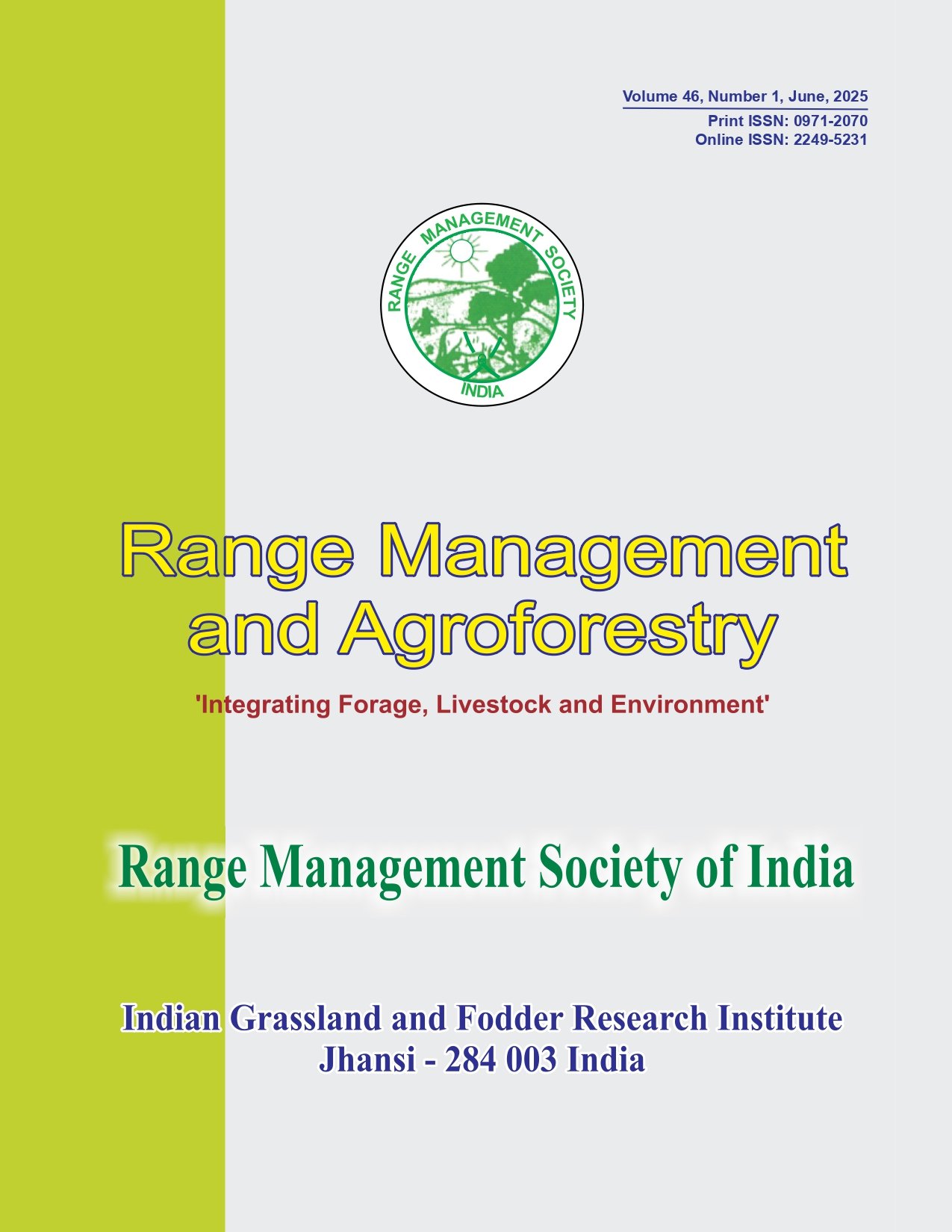Evaluation of nutritional quality and yield of winter forages prevalent in Punjab
Keywords:
Dry fodder yield, Forages, Green fodder yield, Nutritional composition, TanninAbstract
Abstract The experiment was conducted to evaluate winter forage legumes (Trifolium alexandrium, Trifolium respinatum, Medicago sativa, Trigonella foenum-graecum, Melilotus indica) and non-legumes (Avena sativa, Lolium perenne, Brassica juncea) on the basis of various nutritional and anti-nutritional attributes, green fodder yield (GFY), dry matter yield (DMY) and crude protein yield (CPY). The legume crops showed significant variation for nutritional components and the mean values (%) of CP, NDF, ADF, TDN and ash content were 21.2, 37.1, 26.9 67.1 and 13.7, respectively. The corresponding values in nonleguminous crops were 13.3, 41.0, 30.4, 67.0 and 11.5%, respectively. Mean values (mg/g) of total phenol, tannin, non-tannin phenol, flavonoid and saponin in leguminous crops were 3.6, 1.1, 2.5, 11.3 and 23.0, respectively while in non-leguminous crops were 4.9, 1.4, 3.5, 12.6 and 18.9, respectively. It was observed that GFY and CPY were highest in Trifolium alexandrium and DMY was maximum in Lolium perenne. The green forage production efficiency for these winter forages ranged from 2.6-5.3 q/ha/day. These results suggested that Medicago sativa and Brassica juncea were best in nutritional attributes among leguminous and non-leguminous crops, respectively, while the crops like Trifolium alexandrium and Lolium perenne had high values of GFY, CPY and DMY.




